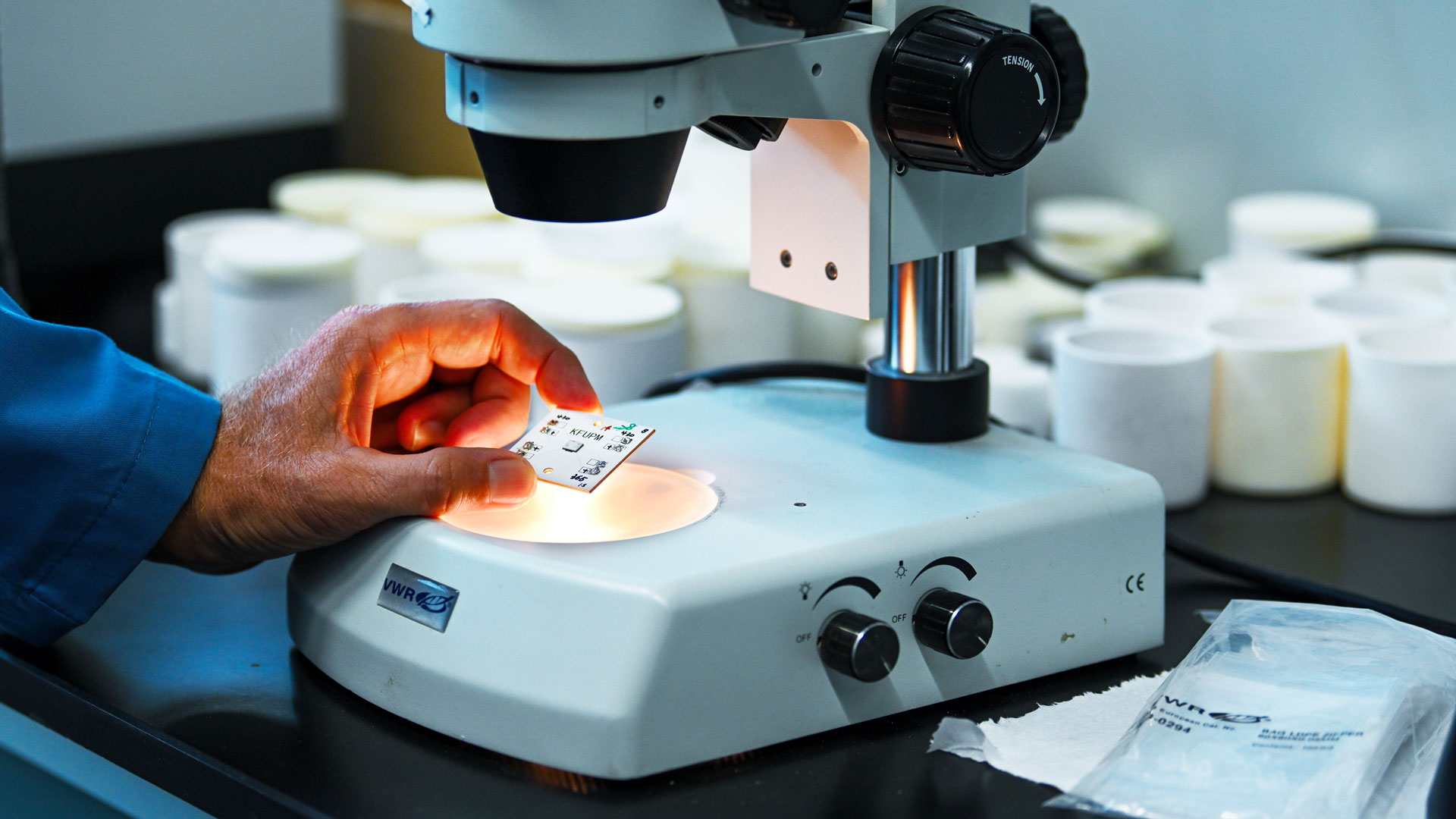Innovative Sunlight Technology for Chemical-Free Disinfection
IRC for Integrative Petroleum Research (CIPR)
Research team:
Dr. Zhengwei Pan, Dr. Yafei Chen, Dr. Theis Solling, Dr. Atif Al Zahrani, and Miss Rola Kuban

Most disinfecting methods still depend on chemical additives. While these may be effective, they leave residues and create long-term sustainability concerns. Researchers from KFUPM’s interdisciplinary Center for Integrative Petroleum Research (CIPR) have created a new material that can transform ordinary sunlight into disinfecting UVC radiation. By converting visible light into a wavelength that breaks down bacterial DNA, the invention offers a practical way to sterilize water and most surfaces without using chemicals.
The research began under the direction of Dr. Zhengwei Pan, with the commercialization process later carried forward by the College of Petroleum and Geosciences (CPG), headed by its Dean, Dr. Ali AlYousef. The invention supports his overarching initiative to strengthen the CIPR’s focus on emerging, industry-relevant areas, such as circular water management. Over the course of three years, the five-member interdisciplinary team brought together expertise in photonics, chemistry, materials science, and petroleum engineering, leading to the development of this unique technology. Their innovative process involves inserting rare earth elements into titanium oxide lattices, forming a precise structure which enables the conversion of sunlight into high-intensity radiation. Unlike previous attempts that used organic polymers prone to decay, this ceramic-like material is highly durable and could last indefinitely. The intensity of the UVC light produced is also higher than any earlier attempts at similar “up-conversion” technologies, making it vastly effective and versatile.
One of its main applications is in water treatment for upstream oil production. Today, companies still rely heavily on chemical treatments for industrial wastewater, such as that used in oil and gas extraction. This water often carries sulfate-reducing bacteria that generate insoluble salts which can, in turn, clog reservoirs and pipelines, leading to expensive interruptions. With the new material, small discs or sheets can be placed directly in contaminated water. Sunlight activates the material, which then produces UVC locally, disinfecting the water without additional chemicals. This makes it possible to reuse water in oil operations more safely and at lower cost.
Beyond industrial use, the team has tested flashlight prototypes that incorporate the material into their diode. When switched on, the flashlight emits the disinfecting UVC light, its intensity controlled by the amount of power supplied. Specialized filters have confirmed that the device’s performance is on par with existing commercial disinfecting products. This development is especially significant as it provides a practical alternative to mercury-based lamps, which were considered the conventional method for disinfection, but have been phased out worldwide under the 2013 Minamata Convention due to environmental and safety concerns. Mercury is a toxic heavy metal, and if improperly disposed of, it can cause serious harm to both human health and the environment.
Practical considerations have also been part of the technology’s design. The estimated cost of production is around $50 per kilogram. Since only tiny amounts are needed for each device, this amounts to just a few cents per unit. Despite their name, the rare earth elements used are also widely available and relatively inexpensive, meaning there are few barriers to scaling up manufacturing.
According to Dr. Theis Solling, one of the senior research scholars involved in this initiative, the team’s work fits into KFUPM’s wider efforts to advance circular water management, as it directly supports the safe treatment and reuse of water. With the material synthesis process patented and the prototypes already tested, the technology is considered ready for production. While further optimization could improve efficiency, the foundation is already in place for a practical change in how disinfection is achieved.
United Nations SDGs
Through our commitment to sustainable development, this project aligns with the following United Nations Sustainable Development Goals (SDGs):

Clean Water and Sanitation

Climate Action